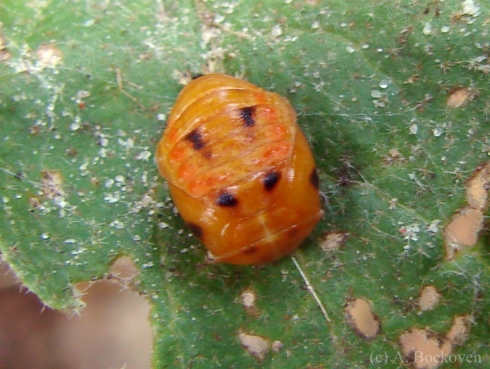This is a special retroactive emergency update post in honor of my mother’s birthday. Apparently I don’t post enough ‘cute’ bug pictures. (I think they’re all cute, but that’s just me.) Ladybugs have been demanded and will be supplied.
This is a somewhat less cute picture of a ladybug pupa. This is the ladybug equivalent of a chrysalis or cocoon. It is an inactive, resting life stage while the ladybug restructures its body into it’s adult form. The ladybug’s aposematic coloration which warns that it is toxic to eat allows it to pupate exposed on the leaves of plants in the midst of its primary food source–aphids. Many other beetles pupate underground, inside plants, or drop to the leaf litter at the base of trees to pupate.
And finally a picture of a ‘baby’ ladybug. Awwww. I had to look closely to figure out what was going on in this picture. At first I thought it was a ladybug larva molting out of its previous skin, but in fact this larva is apparently cannibalizing another ladybug larva. Delicious!
Happy birthday, Mom!






Recent Comments